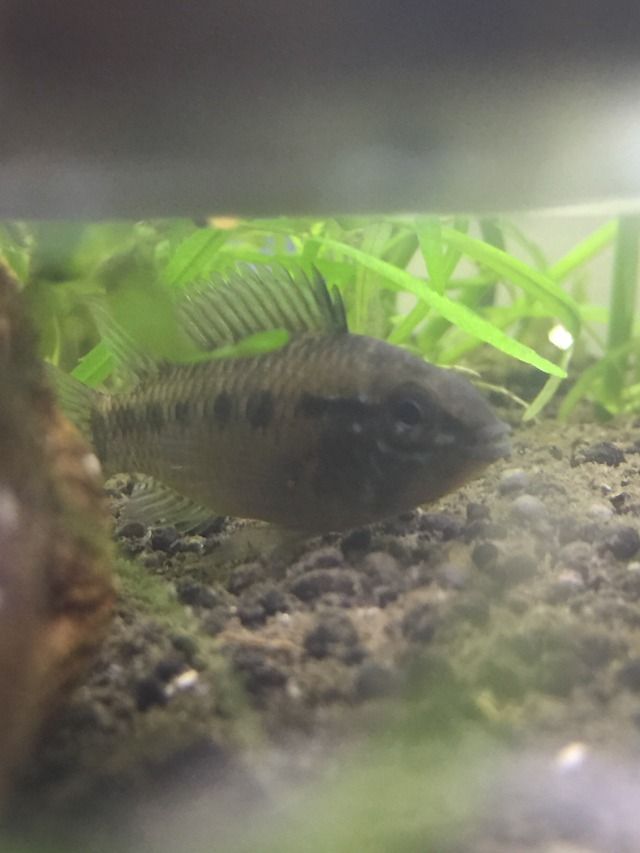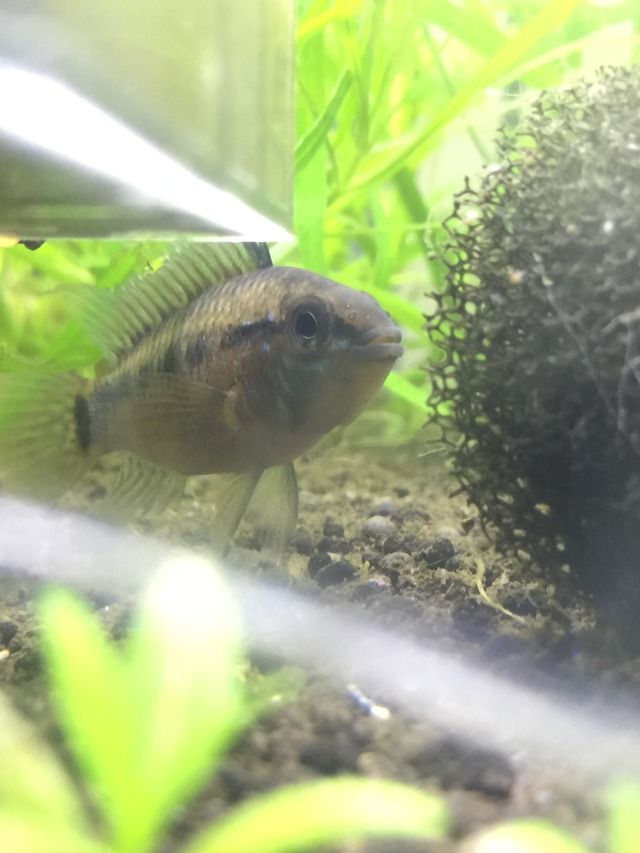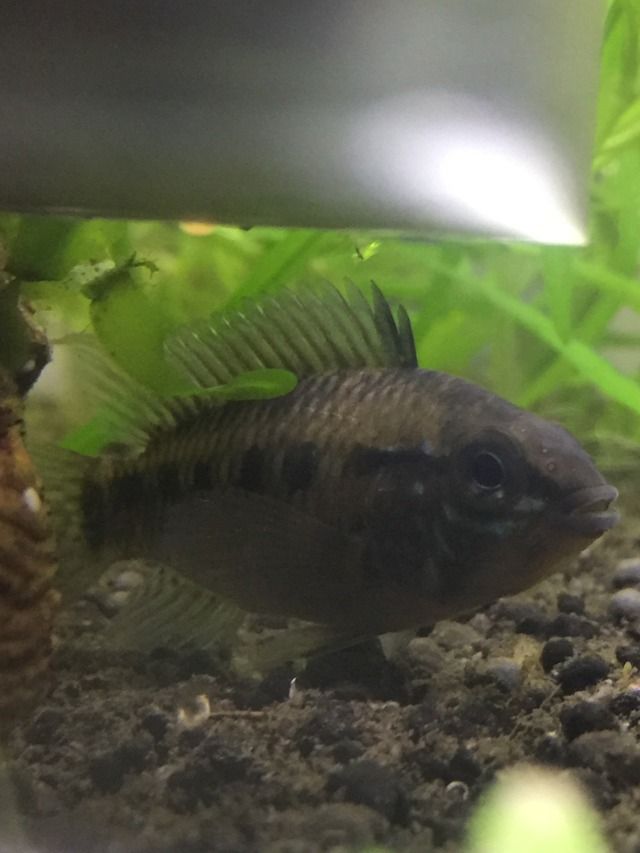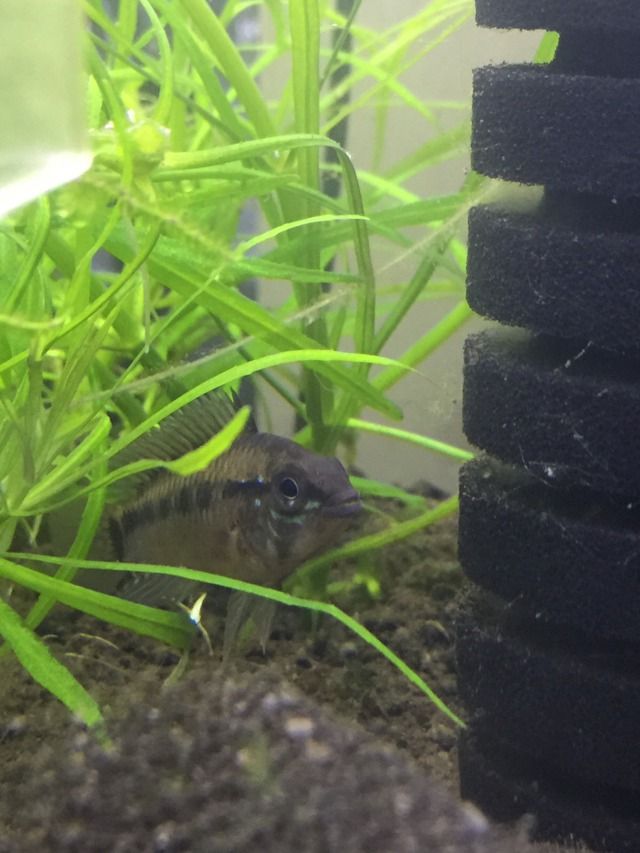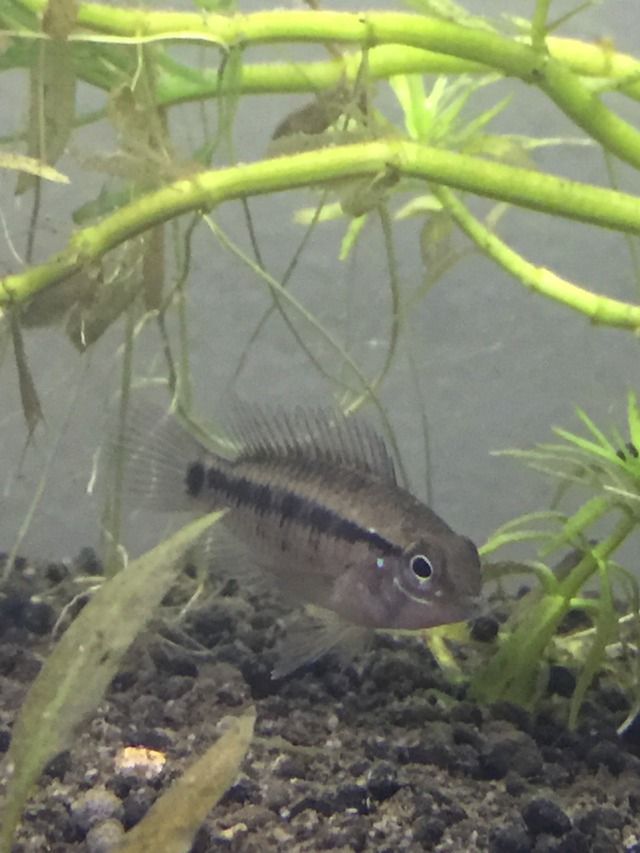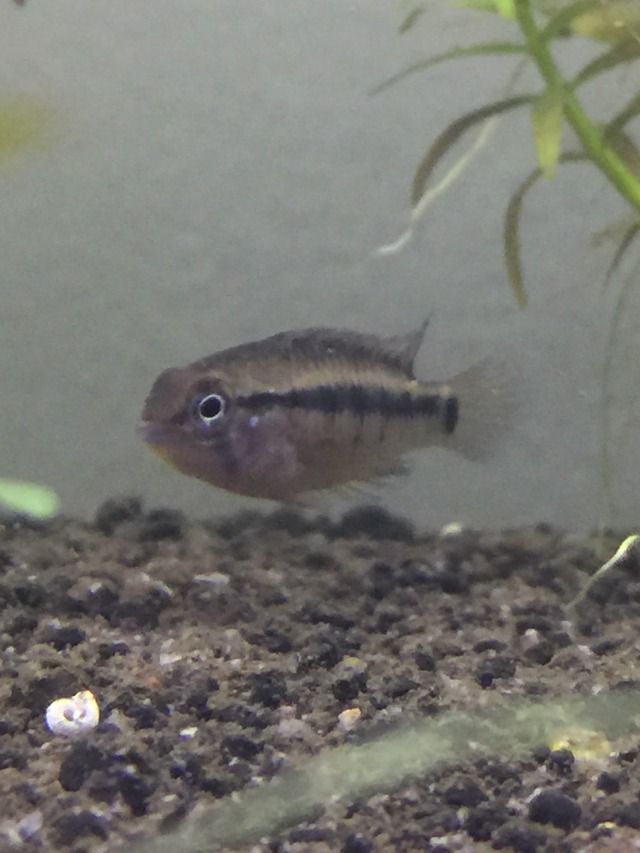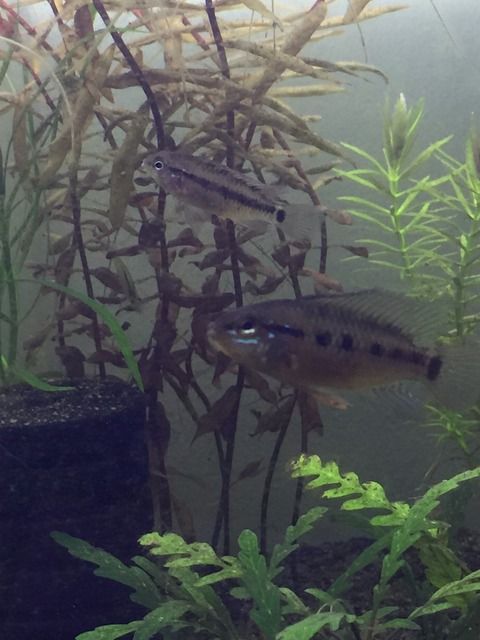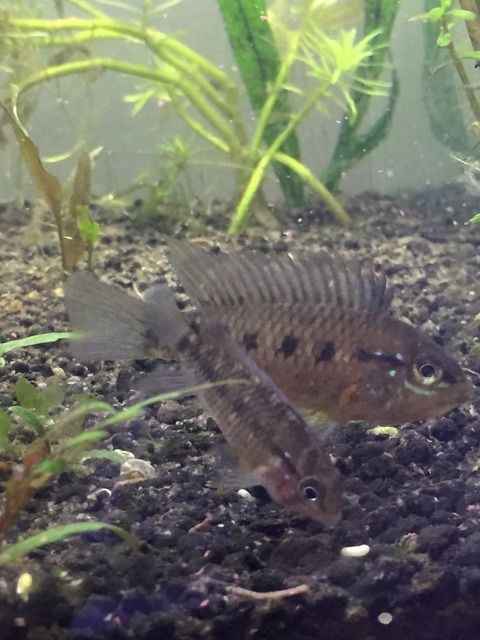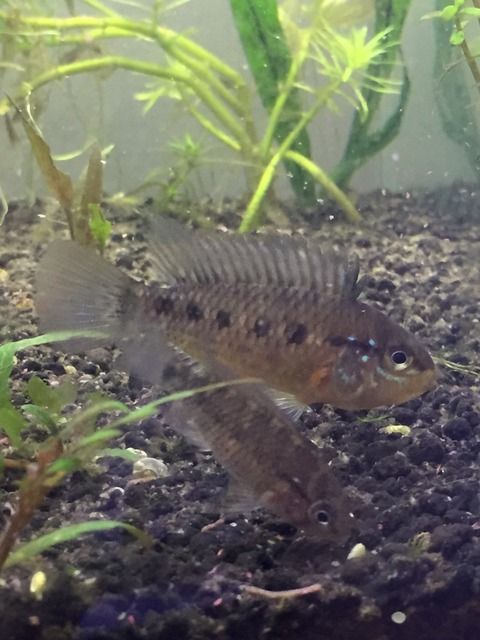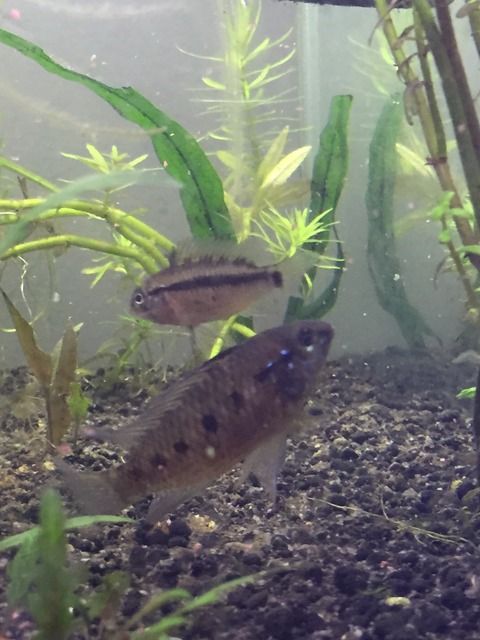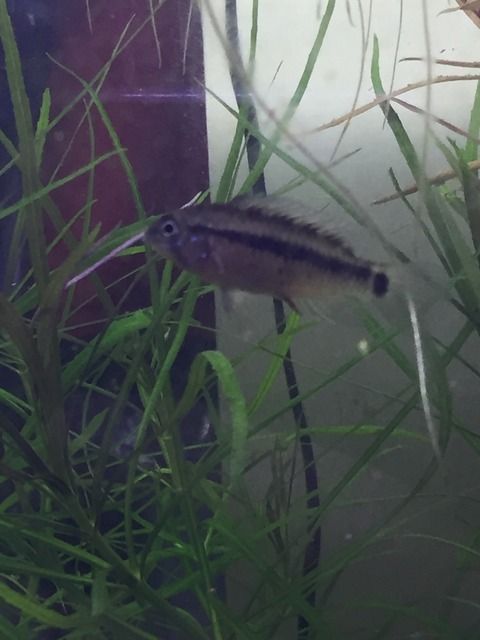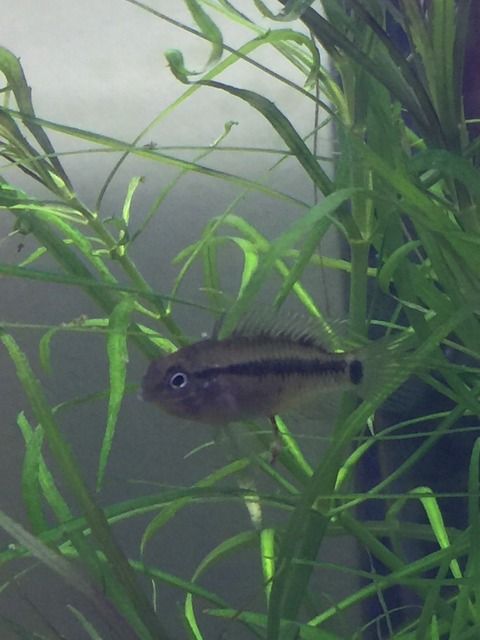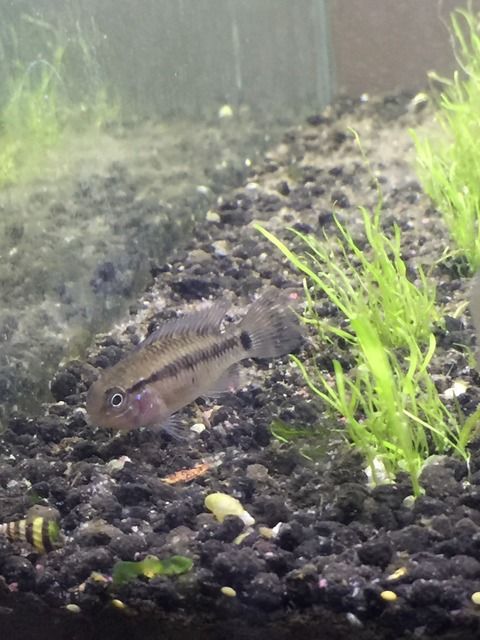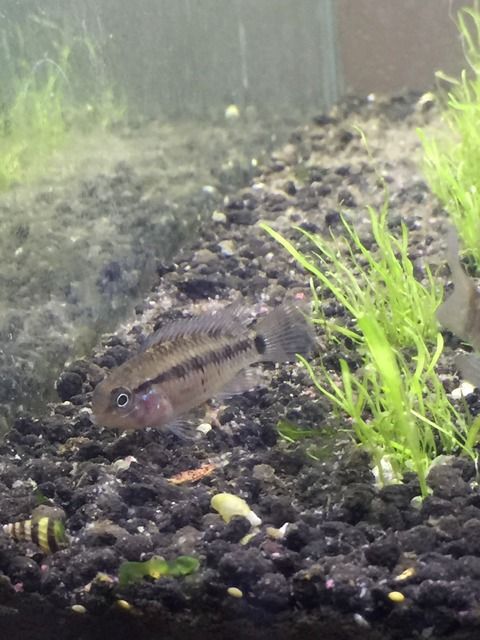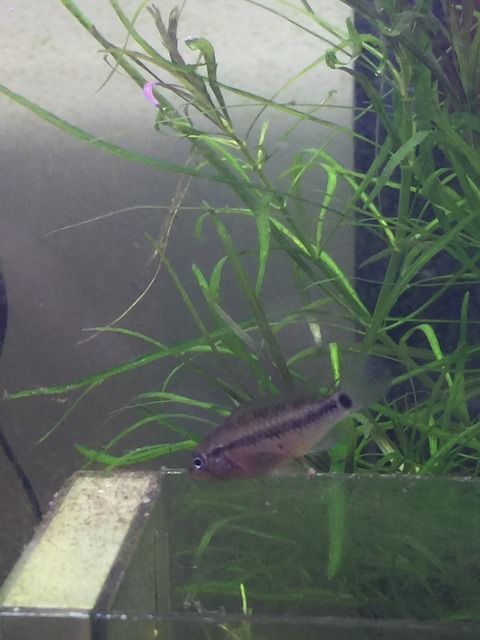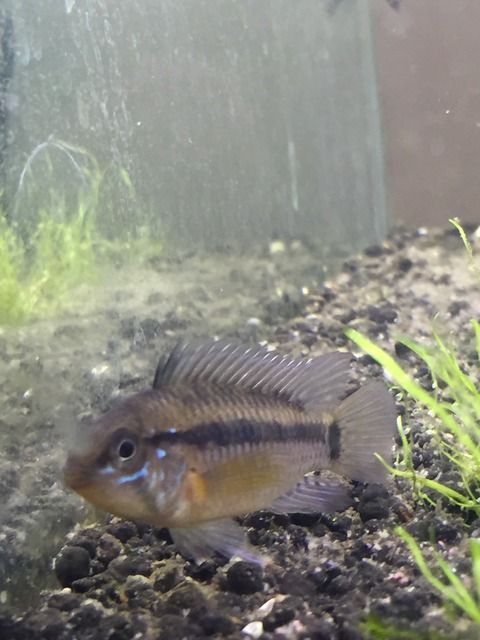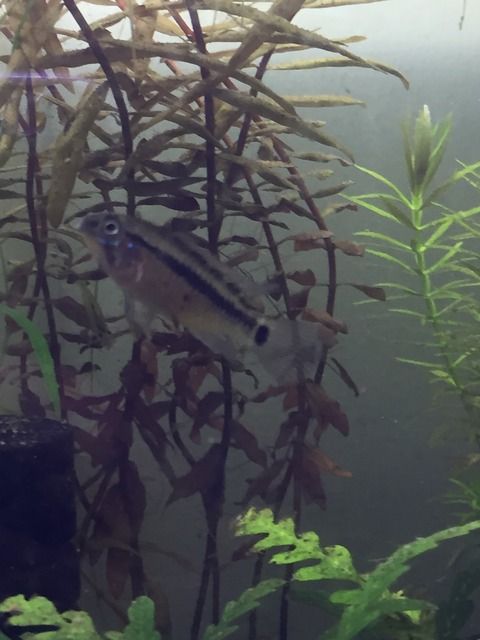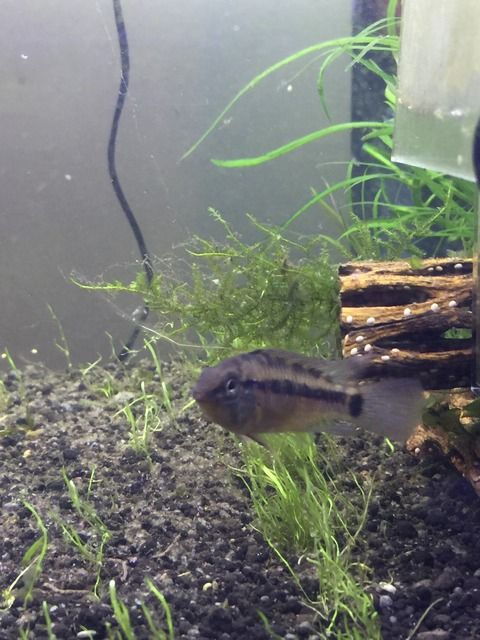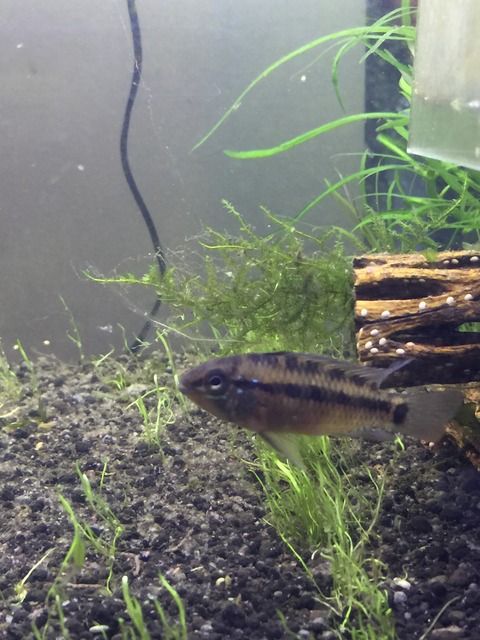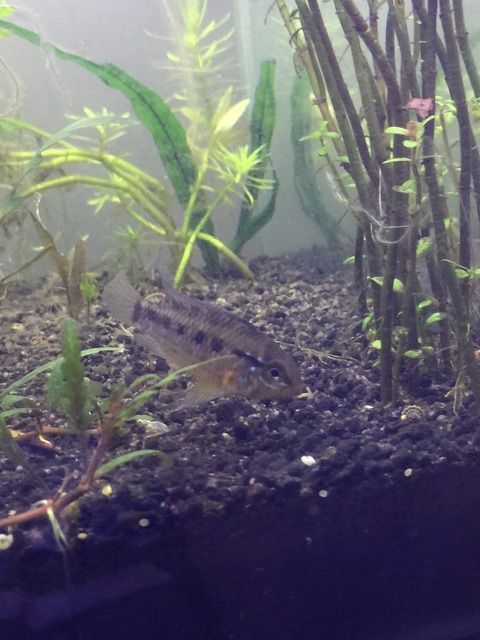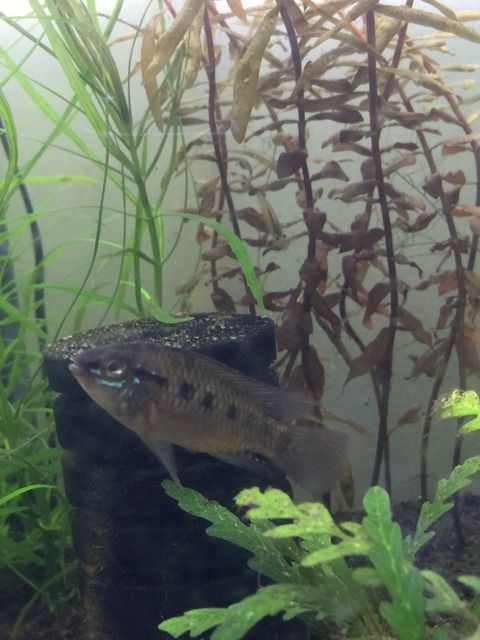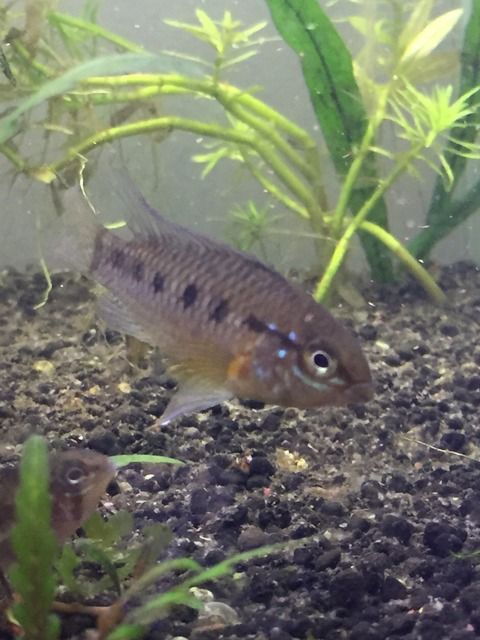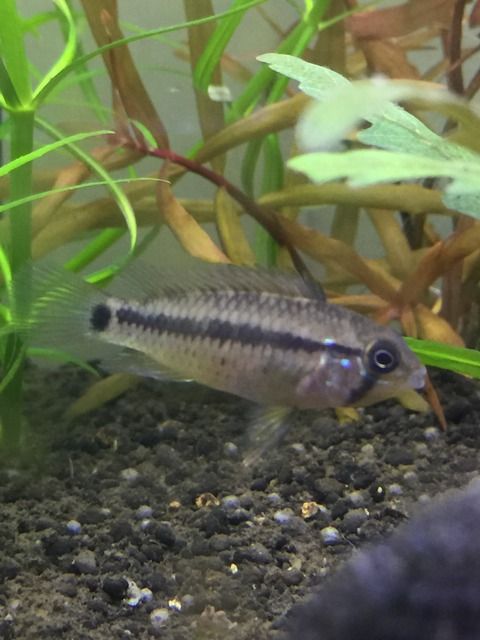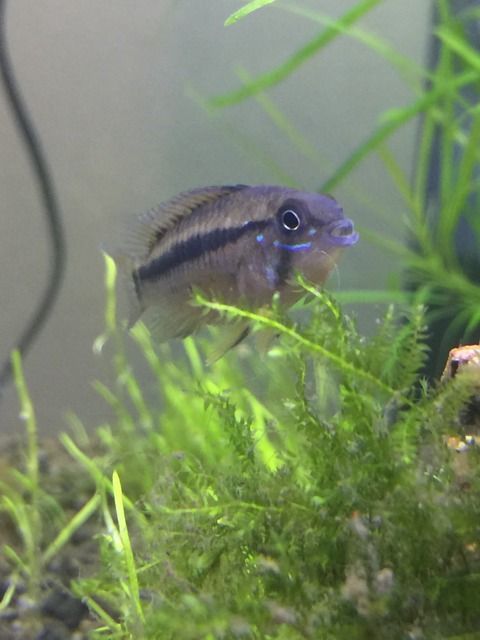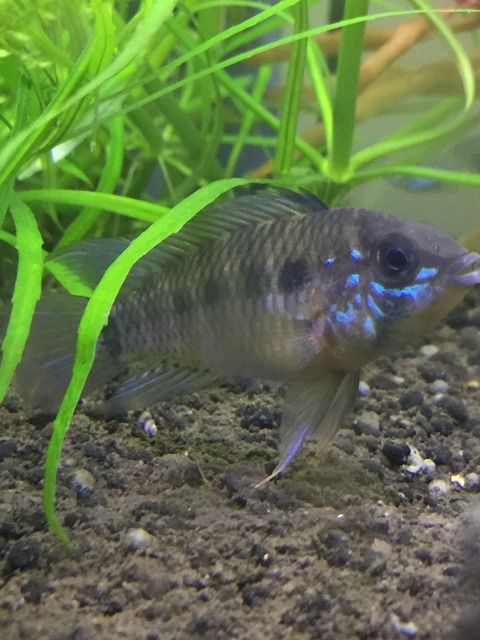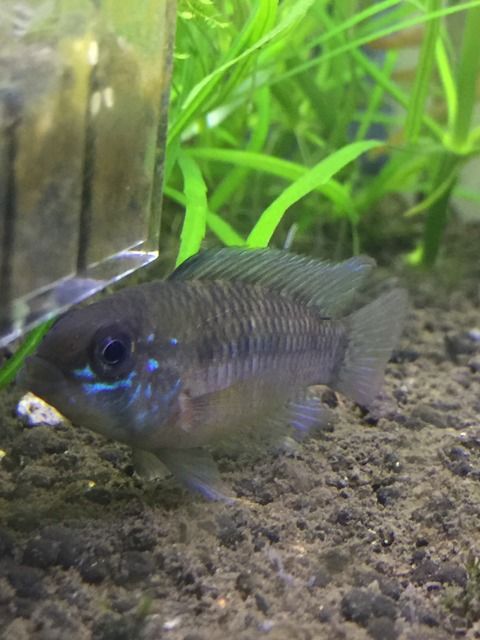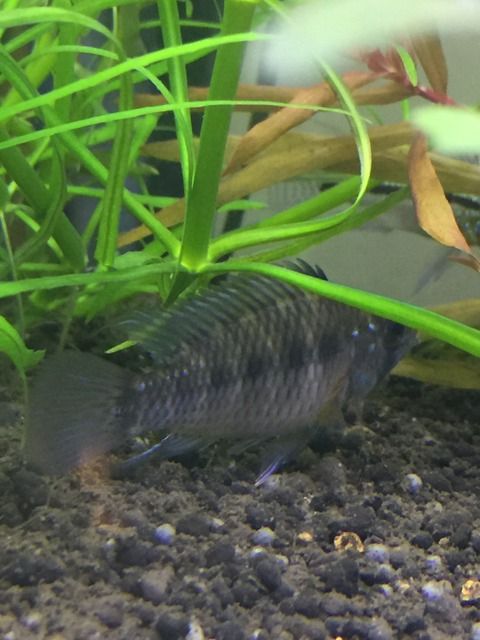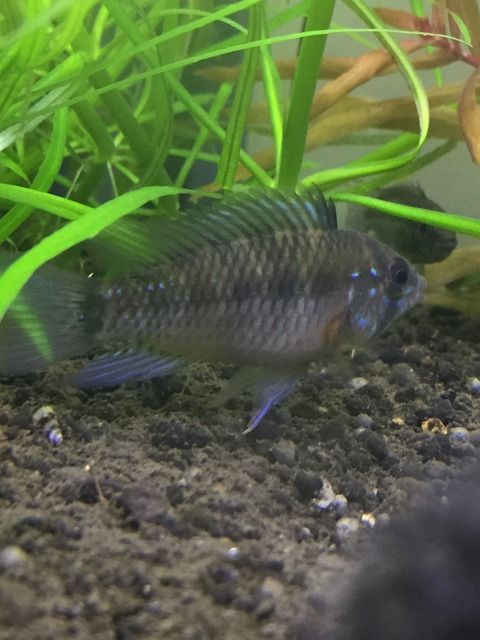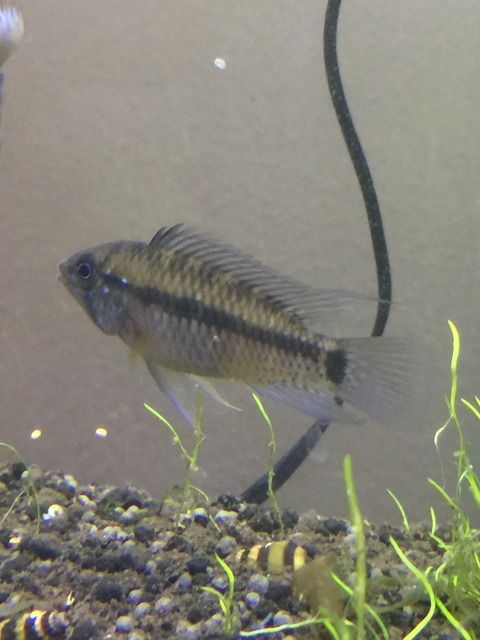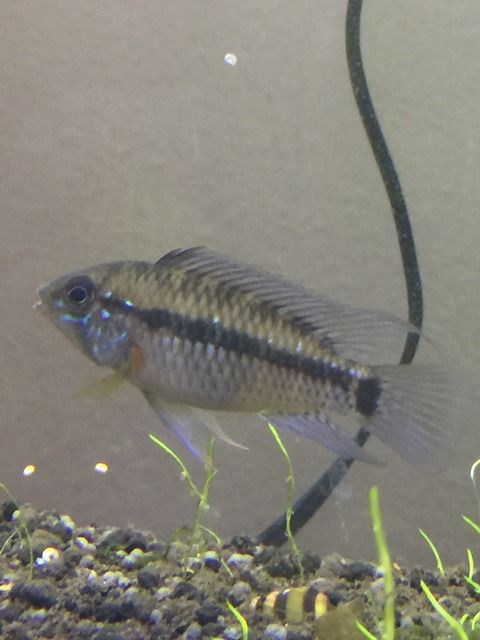-
Hello guest! Are you an Apistogramma enthusiast? If so we invite you to join our community and see what it has to offer. Our site is specifically designed for you and it's a great place for Apisto enthusiasts to meet online. Once you join you'll be able to post messages, upload pictures of your fish and tanks and have a great time with other Apisto enthusiasts. Sign up today!
You are using an out of date browser. It may not display this or other websites correctly.
You should upgrade or use an alternative browser.
You should upgrade or use an alternative browser.
ID and Sex of the apisto
- Thread starter lamchops
- Start date
- Messages
- 1,491
- Location
- Wake Forest NC, USA
I'm not sure about species: maybe "steel-blue" Apisto (a domesticated hybrid) or one of the species related to A. caetei or resticulosa. What name were they sold as? The larger fish is probably male, based on the checkered pattern on the rear part of the anal fin. The smaller fish's fins look clear, so I hope that one is a female, but young males can look just like females for a long time, especially when a more dominant male is present.
I'm not sure about species: maybe "steel-blue" Apisto (a domesticated hybrid) or one of the species related to A. caetei or resticulosa. What name were they sold as? The larger fish is probably male, based on the checkered pattern on the rear part of the anal fin. The smaller fish's fins look clear, so I hope that one is a female, but young males can look just like females for a long time, especially when a more dominant male is present.
thanks for the ID, I don't know what they were sold as, since I purchased them second hand from a member on a planted forum. all he told me was that they were labeled wild caught.
im hoping that these are a pair would be cool to wigglers from them.
- Messages
- 11,224
- Location
- Denver, Colorado, U.S.A.
Regani-group species, which reduces the number of possible species to about 150. We definitely need better photos.
We definitely need better photos.
Regani-group species, which reduces the number of possible species to about 150.We definitely need better photos.
ill get more better pictures of them in my tank tonight. it so hard to get a picture of them without having to zoom in on them.
- Messages
- 1,491
- Location
- Wake Forest NC, USA
I retract my "steel-blue" guess ... i don't think they are that ... let's see what other folks say.
- Messages
- 11,224
- Location
- Denver, Colorado, U.S.A.
It's a regani-complex species, one of the Peruvian forms/populations of A. paulmulleri, but probably not the Masken form.
It's a regani-complex species, one of the Peruvian forms/populations of A. paulmulleri, but probably not the Masken form.
truly an expert at apistos. I've just google them and they look similar or exact.
Thanks for the help, do you know if they are a pair? I've been trying to identify them by the top fin and they look like a pair where the bigger one is starting to have a streamer and the smaller one isn't growing one but is more rounded off at the ends.
- Messages
- 11,224
- Location
- Denver, Colorado, U.S.A.
Yes, they look like a pair. They're probably the same as or similar to Römer's "A. sp. Peru-Regani" form (much less red on the face than the Masken form). There are several paulmuelleri-like forms/species that we don't know enough about to decide if they are different species or just populations of the same species.
Yes, they look like a pair, most likely Römer "A. sp. Peru-Regani".
Thanks again Mike for the help now I can stop sifting through hundreds of apistogramma pictures trying to key in an ID
- Messages
- 586
- Location
- Germany
I may be wrong, but to me these fish (especially the larger one) look more like a cruzi-subcomplex species.
- Messages
- 11,224
- Location
- Denver, Colorado, U.S.A.
No, the fish show the noticeably lighter caudal peduncle area between the last (Bar 7) lateral spot and caudal spot, which is diagnostic for regani-complex species.
- Messages
- 586
- Location
- Germany
Honestly, to me the area between lateral band and caudal spot doesn't look as I would expect it from typical regani-complex species. In some pictures there is no such area that strictly separates the lateral band from the caudal spot at all. Rather, the lateral band seems to almost touch the caudal spot in some points. In my opinion, the slightly lighter separation-area as in fact shown by these fish in some pictures, can be seen in many non regani-complex species too.
On the other hand, the black dashes that seem to „radiate“ out of the rear part of the caudal spot and make it look kind of frayed, is something I would expect in such a pronounced form from A. sp. Putumayo for example, but not from A. paulmuelleri/Peru-regani.

Moreover, in the above pictures I can't see any hint of a patterned caudal fin that A. paulmuelleri/Peru-regani should show - at least in the rear part of the caudal fin. But of course, I admit that the pictures are not very clear so that it can't be excluded for sure.
In some pictures the fish seem to have yellowish pectoral fins, do you think these are just photographic artefacts? I'm not quite sure abot this.
On the other hand, the black dashes that seem to „radiate“ out of the rear part of the caudal spot and make it look kind of frayed, is something I would expect in such a pronounced form from A. sp. Putumayo for example, but not from A. paulmuelleri/Peru-regani.
Moreover, in the above pictures I can't see any hint of a patterned caudal fin that A. paulmuelleri/Peru-regani should show - at least in the rear part of the caudal fin. But of course, I admit that the pictures are not very clear so that it can't be excluded for sure.
In some pictures the fish seem to have yellowish pectoral fins, do you think these are just photographic artefacts? I'm not quite sure abot this.
- Messages
- 11,224
- Location
- Denver, Colorado, U.S.A.
Well, this is a problem with identification only from photos. One specimen can appear quite different in different photos. For example, the vertica, light interstitial area between the lateral band and caudal spot varies in intensity in the photos. On other regani-group species, this area is the same brightness as the rest of the flanks. Cruzi-like species usually show dark dorsal spots below the dorsal fin. Yes, regani-complex species show this at times, too, but when they do the abdominal stripes aren't as prominent as on cruzi-like species. Typically cruzi-like species show strong abdominal stripes at the same time as the strong row of lateral spots and dorsal spots. Cruzi-like species don't show the vertical flank streaks, but regani-complex species do at times. Some of the photos show vestiges of these streaks. As for the caudal fin markings near the root of the tail that you note, well this pattern is more common on resticulosa-complex species but also on many other regani-group species with mostly unpatterned caudals (in both the regani- and eunotus(cruzi)-complexes). I don't know how diagnostic this really is. The dorsal tips on cruzi-like species tend to be longer than on regani-complex species, extending back beyond more than half the caudal fin length on mature males. Either the male(s) shown here is still not fully mature or it has shorter dorsal fin tips more typical of regani-complex species. All of these characteristics make be believe that this is a regani-complex species.
Of course, I can be wrong (just ask my wife!).
Of course, I can be wrong (just ask my wife!).
- Messages
- 586
- Location
- Germany
That's a detailed explanation! I see why you believe this to be a regani-complex species. However, though your reasoning sounds comprehensible to me, I'm still not completely convinced, especially about the larger fish. But probably this will only change, when I see a picture in which I can clearly recognize it as a regani-complex species myself. Anyway, thanks for sharing your knowledge!
- Messages
- 11,224
- Location
- Denver, Colorado, U.S.A.
Much better photos. With that said, Frank probably is correct. It looks more like a cruzi-subcomplex species, but I would expect to see more prominent abdominal stripes. Which species? I have no idea. You see, the entire Río Napo system is filled with subtly different forms/species. Unless these are offspring from fish TomC and I collected in 2012/2015 my guess it is a commercially imported species from near Iquitos, like A. sp. Nanay/Melgar. It doesn't quite look like this species, however.
- Messages
- 586
- Location
- Germany
Mike, due to this discussion I have looked a bit closer at the pictures of the "Peru-regani", shown in Römer's Cichlid Atlas. Now I wonder whether Römer's fish should be considered as a form of A. paulmuelleri or rather as a separate species? I tend to believe the latter, because it doesn't show convincing hints of the 4 rows of rather pronounced abdominal stripes known from paulmuelleri and in none of the pictures the lateral band shows the typical „blurred“ look (I hope you know what I mean) it sometimes has in paulmuelleri nor does the caudal spot show the typical „segment of a circle“ shape either. Moreover, the pattern of vertical stripes in the caudal fin seems to be restricted to the rear part only. What do you think about this?
Similar threads
- Replies
- 10
- Views
- 904
